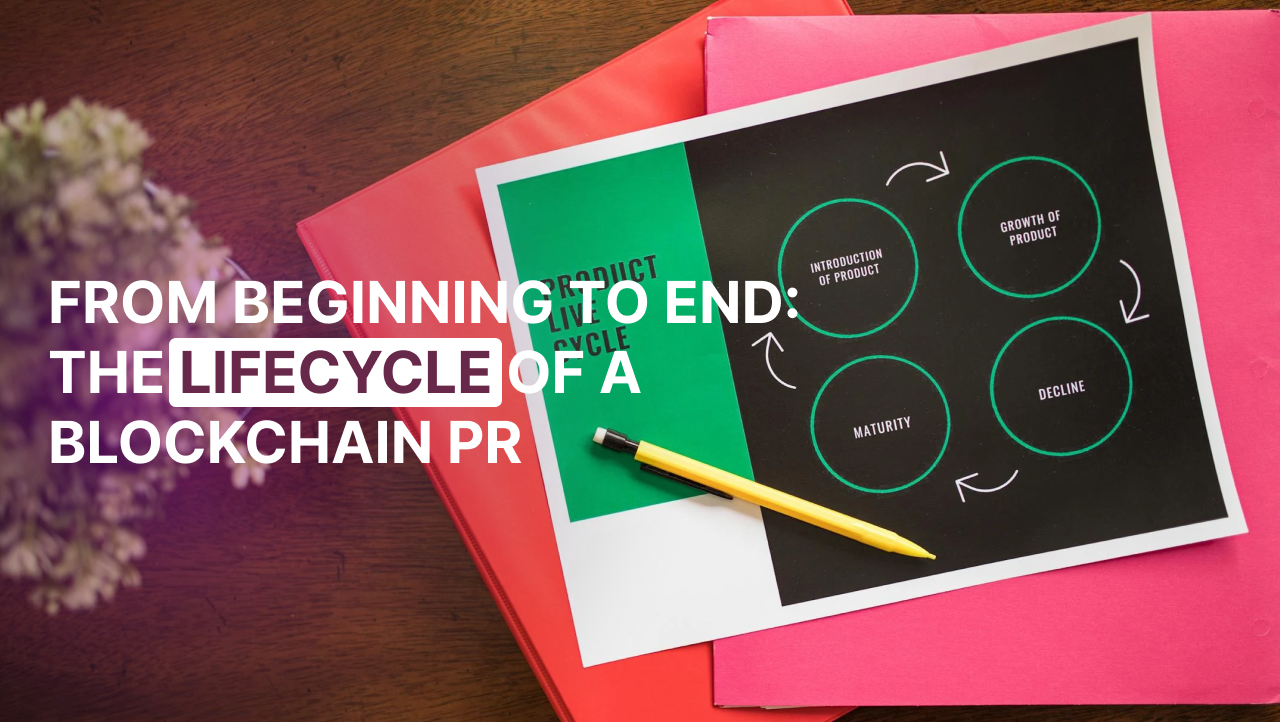If you operate within the web3 space, chances are you’ve put out a blockchain PR at some point. These PRs are very important because they are the way by which you can get vital information out to the public land drama publicity for various developments in your organization.
What goes on the backend of a blockchain PR? From the creation of the PR to hopefully achieving its goals, what does its lifecycle look like? In this article, we will touch on the lifecycle of your blockchain PR and offer more insight into enhancing it.
-
Stage 1: Creation

The first stage in the lifecycle of a blockchain PR is its creation. Obviously, this is triggered by whatever development you want to report on. Whether it’s your business launching a new product or leadership change, there has to be something to announce and this is the catalyst behind the PR. There are a few ways that a business can go about creating a blockchain PR. Some create their PRs in-house, in which case, your writing team will report on the development in question and gain editorial approval. Another option would be to outsource the writing to an agency like BTCWire.
As we’ve touched on in a previous blog post, there are several benefits to doing this, including speed, access to editorial expertise, and so on. regardless of which path you choose, the blockchain pr should adhere to all the best practices, including length, use of SEO, appropriate images, and so on. Once the pr is drafted to these standards, it is ready to move on to the next stage and achieve the necessary goals. This stage can take anywhere from under an hour to days to complete.
-
Stage 2: Distribution
The next stage in a blockchain PR’s lifecycle is its distribution. This varies from one project to the next and depends on how you choose to distribute the piece. If you choose to distribute the PR yourself, it could be carried from a few to dozens of PR sites, new sites, and so on. It could also be published on multiple platforms in a single go or this could happen at different times. Submitting your PR manually also comes with the risk of rejection. Different PR sites have their requirements for releases to be published and if your press release doesn’t meet these, it could be rejected by editors.
If you choose a service like what we offer at BTCWire, you cannot only rest assured that the blockchain PR will be distributed on dozens if not hundreds of sites but that publication will happen roughly around the same time. Ultimately, the distribution of a blockchain PR determines how effective it will be in the market and how far it will go. Low distribution means that its proliferation will be quite low while high distribution all but guarantees high proliferation. And as we’ll touch on the next point, proliferation is key.
-
Stage 3: Proliferation

After the blockchain PR has been distributed, the next step is to hope for proliferation. Proliferation, in this case, refers to the PR and its content being picked up by relevant media and the public. An example of proliferation would be crypto new sites writing stories about the developments in the PR and hopefully, linking to both the PR and your company website. Proliferation is based on several factors, including how interesting the PR is and how widely seen it is. If your company announced a major partnership with Binance, for example, it would likely see a lot of proliferation without too much effort on your end.
On the other hand, companies that don’t have that level of cloud behind them will need to depend on heavy distribution for proliferation to take place. If your blockchain PR is published on as many different release sites as possible, there is a higher chance that major news sites will come across it and pick it up and this will benefit you in the long run.
-
Stage 4: Audience Engagement
All the efforts in designing and distributing your blockchain PR are in a bid to secure proliferation and, more importantly, audience engagement. Audience engagement is essentially the actions that readers will take as a result of your blockchain PR. Say you put out a blockchain PR about your new line of Bitcoin miners. After it has been published on various sites and hopefully, picked up by new sites and posted on social media, your audience should engage with it.
Engagement, in this sense, includes liking social media posts related to it, sharing articles about it, visiting your website, and hopefully, making a purchase. At the same time, audience engagement could Simply be them knowing about the development in question. After all, some blockchain PRs are simply to announce a change in leadership or a rebrand of some sort. In that case, the general public being aware of this development is audience engagement.
Audience engagement is the final part of the lifecycle of a blockchain PR and can last indefinitely. A social media post based on your blockchain PR from 3 years ago can continue to convert customers well into the future. Audience engagement, just like proliferation, depends on several factors, such as how engaging the PR is and how much value you are offering customers.
Conclusion
From its creation to its conversion of customers, a blockchain PR goes through a complex journey. Different factors impact the different stages of this journey, either lengthening or shortening them, as well as making them more or less effective. To get the best results from your blockchain PR, you need to make sure that care is taken at every stage. It must be crafted as carefully as possible, must be distributed to as many platforms that will accept them, should be proliferated far and wide, and should push audience engagement. For even better results, consider signing up for a service like what we offer at BTCWire which will make your blockchain PR as visible as possible.

